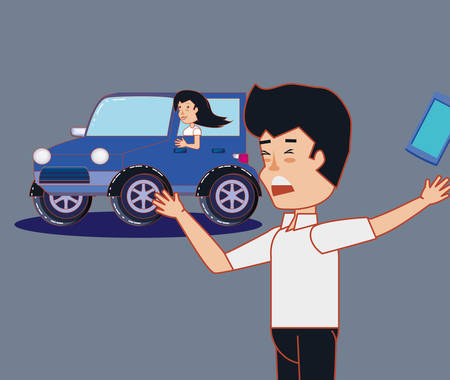1. Introduction to Drifting Suspension
Drifting is all about control, and your suspension setup plays a crucial role in keeping your car balanced while sliding sideways. Unlike traditional racing, where grip is the goal, drifting requires a suspension system that allows for quick transitions, predictable handling, and maximum control during high-angle slides.
Why Suspension Setup Matters
Your car’s suspension directly impacts its ability to maintain a drift. A well-tuned suspension setup helps with stability, weight transfer, and responsiveness, all of which improve your ability to hold long drifts and make adjustments on the fly.
How Suspension Affects Drifting Performance
Drift cars need specific suspension characteristics for optimal performance. Here’s a breakdown of key suspension factors and their effects on drifting:
| Suspension Factor | Effect on Drifting |
|---|---|
| Spring Rate | Stiffer springs reduce body roll and keep weight transfer predictable. |
| Dampers | Adjustable shocks allow fine-tuning of rebound and compression for better slide control. |
| Ride Height | Lowering the car improves its center of gravity, increasing stability. |
| Camber | Negative camber on the front wheels enhances grip, while slight positive camber in the rear helps maintain slides. |
| Toe Angle | Toe-out on the front wheels improves turn-in response, while slight toe-in at the rear stabilizes the car. |
Balancing Grip and Slip
A good drift suspension setup is about finding the right balance between grip and slip. Too much grip, and it becomes hard to initiate a drift. Too much slip, and control becomes inconsistent. Tuning your suspension properly allows you to maintain smooth drifts while keeping the car predictable and responsive.
2. Key Suspension Components for Drifting
Drifting puts a lot of stress on your car’s suspension, so having the right components is crucial for control and stability. The following are the key suspension parts that impact drift performance and how they contribute to better handling.
Coilovers
Coilovers are one of the most important upgrades for any drift car. They allow you to adjust ride height, damping, and spring rates to suit your driving style. High-quality coilovers help maintain tire contact with the road, providing better traction and control during a drift.
Why Coilovers Matter for Drifting:
- Adjustable Ride Height: Lowers the center of gravity for improved stability.
- Customizable Damping: Fine-tunes stiffness to match track conditions.
- Improved Weight Transfer: Helps keep the car balanced through transitions.
Control Arms
Upgraded control arms enhance wheel alignment and steering angle, giving you more precision when initiating and maintaining a drift. Adjustable control arms allow fine-tuning of camber, caster, and toe settings.
Benefits of Aftermarket Control Arms:
- Increased Steering Angle: Allows sharper transitions and smoother drifts.
- Enhanced Camber Adjustments: Provides better tire contact and grip.
- Greater Durability: Stronger materials withstand the stress of drifting.
Sway Bars (Anti-Roll Bars)
Sway bars reduce body roll, keeping the car more level through turns. For drifting, stiffer sway bars in the front and a softer setup in the rear help control weight transfer and maintain smooth transitions.
Recommended Sway Bar Setup:
| Position | Recommended Stiffness | Impact on Drifting |
|---|---|---|
| Front | Stiff | Reduces understeer, improves control |
| Rear | Softer | Allows better weight transfer for easier oversteer |
Suspension Bushings
Factory rubber bushings can flex under load, which reduces precision. Upgrading to polyurethane or solid bushings helps improve responsiveness and feedback, making it easier to control the car in a drift.
Types of Suspension Bushings:
- Polyurethane Bushings: Reduce flex while still providing some comfort.
- Solid/Metal Bushings: Offer the most direct handling feedback but increase vibrations.
Investing in these suspension components will help you achieve better handling, greater control, and more consistent drifts, making your setup more suited for high-performance driving.

3. Optimal Suspension Settings for Drifting
When setting up your suspension for drifting, getting the right balance between grip and slip is crucial. Each adjustment affects how your car handles during slides. Below, we’ll go over the most important suspension settings you need to fine-tune for maximum drift control.
Camber
Camber refers to the angle of the wheels relative to the road when viewed from the front. For drifting, you generally want negative camber in the front to increase grip while keeping the rear camber close to zero for better slide control.
| Wheel Position | Camber Setting | Effect |
|---|---|---|
| Front | -2 to -4 degrees | Increases front-end grip and steering response |
| Rear | -0.5 to -2 degrees | Maintains stability while allowing controlled slides |
Toe
Toe alignment affects how the wheels point in relation to each other. Front toe-out helps with initial turn-in, while rear toe-in improves stability during drifts.
| Wheel Position | Toe Setting | Effect |
|---|---|---|
| Front | 0 to slight toe-out | Sharper turn-in and quicker steering response |
| Rear | 0 to slight toe-in | Enhanced stability and control during drifts |
Caster
Caster is the angle of the front suspension’s steering axis when viewed from the side. More positive caster increases self-centering of the steering wheel and improves high-speed stability, which is useful for drifting.
- Recommended setting: +5 to +9 degrees
- More caster gives better straight-line stability and steering feedback.
- Too much caster can make steering effort heavier.
Spring Rates
Choosing the right spring rates helps balance weight transfer and maximize control over traction loss. A stiffer front setup helps with steering response, while a slightly softer rear allows smoother transitions into slides.
| Position | Recommended Rate | Effect |
|---|---|---|
| Front | Medium to stiff | Quick steering response and reduced body roll |
| Rear | Slightly softer than front | Allows better traction control and transition stability |
Damping Adjustments
Damping controls how fast the suspension compresses and rebounds. Adjustable dampers allow you to fine-tune handling based on your driving style.
- Front: Slightly stiffer compression to improve turn-in response.
- Rear: Softer rebound helps maintain traction and allows smoother transitions between slides.
- Balanced damping: Too stiff can make the car unpredictable, while too soft can reduce responsiveness.
Optimizing these suspension settings can transform your car’s drifting performance. The key is finding the right balance that suits your style, car setup, and track conditions. Experiment with these settings and make small adjustments to dial in the perfect setup.
4. Adjustable vs. Fixed Suspension Setups
When setting up a car for drifting, one of the key decisions is choosing between adjustable and fixed suspension setups. Both options have their advantages and disadvantages, and the right choice depends on your drift style and driving preferences.
What Are Adjustable and Fixed Suspension Setups?
Adjustable suspension setups allow you to fine-tune components like camber, toe, and damping to suit your driving style. Fixed suspension setups, on the other hand, come with preset specifications that cannot be modified after installation.
Comparison of Adjustable and Fixed Suspension
| Feature | Adjustable Suspension | Fixed Suspension |
|---|---|---|
| Customization | Highly customizable to driving preferences | Limited or no customization |
| Performance | Optimized for different track conditions | Stable but not adaptable |
| Maintenance | Requires frequent adjustments | Low maintenance |
| Cost | Typically more expensive | More affordable |
| Best For | Professional and competitive drifting | Beginner and casual drifting |
Which One Is Right for You?
If You’re a Beginner
A fixed suspension setup may be the better choice since its more affordable and requires less maintenance. With a fixed setup, you can focus more on mastering drift techniques rather than constantly adjusting your suspension.
If You’re a Competitive Drifter
An adjustable suspension system is the way to go. It gives you the ability to fine-tune key settings like camber, toe angle, and damping, allowing you to adapt to different tracks and improve your drift performance.
If You Drift on Different Surfaces
If you drift on both smooth and rough surfaces, an adjustable suspension setup will provide greater flexibility. You can stiffen the suspension for smooth tracks and soften it for rougher roads to maintain optimal control.
5. Common Mistakes and How to Avoid Them
When setting up a suspension system for drifting, many drivers make common mistakes that can negatively impact handling, control, and overall performance. Understanding these errors and how to prevent them will help you fine-tune your setup for better drifting results.
1. Incorrect Ride Height
Lowering your car too much might seem like a good idea, but it can actually reduce suspension travel and lead to poor handling. On the other hand, setting it too high can cause excessive body roll.
How to Avoid
- Find a balanced ride height that maintains suspension movement while keeping the center of gravity low.
- Test different setups and adjust accordingly based on how the car responds during drifts.
2. Too Much or Too Little Camber
Excessive negative camber can lead to uneven tire wear and reduced traction, while too little camber can make transitions less stable.
How to Avoid
- For the front wheels, aim for moderate negative camber (-3 to -5 degrees) to maximize grip.
- For the rear wheels, keep camber settings closer to neutral (-0.5 to -2 degrees) for better traction.
3. Overly Stiff or Soft Suspension
Having a suspension thats too stiff can result in a lack of grip, making drifts harder to control. A suspension thats too soft can cause excessive body movement, making transitions sloppy.
How to Avoid
- Run stiffer springs and dampers in the front while maintaining a slightly softer rear for better weight transfer.
- Adjust damper settings to fine-tune vehicle response based on track conditions and personal preference.
4. Incorrect Toe Settings
Toe settings affect steering response and stability. Running excessive toe-in or toe-out can make the car unpredictable during drifts.
Recommended Toe Settings
| Axle | Suggested Toe Setting |
|---|---|
| Front | 0 to slight toe-out |
| Rear | Neutral to slight toe-in |
5. Ignoring Corner Balancing
Uneven weight distribution can make the car inconsistent through corners, affecting how it transitions between drifts.
How to Avoid
- Use corner weighting scales to evenly balance the car.
- Adjust coilover preload and ride height to distribute weight more effectively.
Final Thoughts
By avoiding these common suspension setup mistakes, you can improve your cars handling, make drifting more predictable, and enhance overall performance. Take the time to test and adjust each aspect of your suspension to find the right balance for your driving style.


